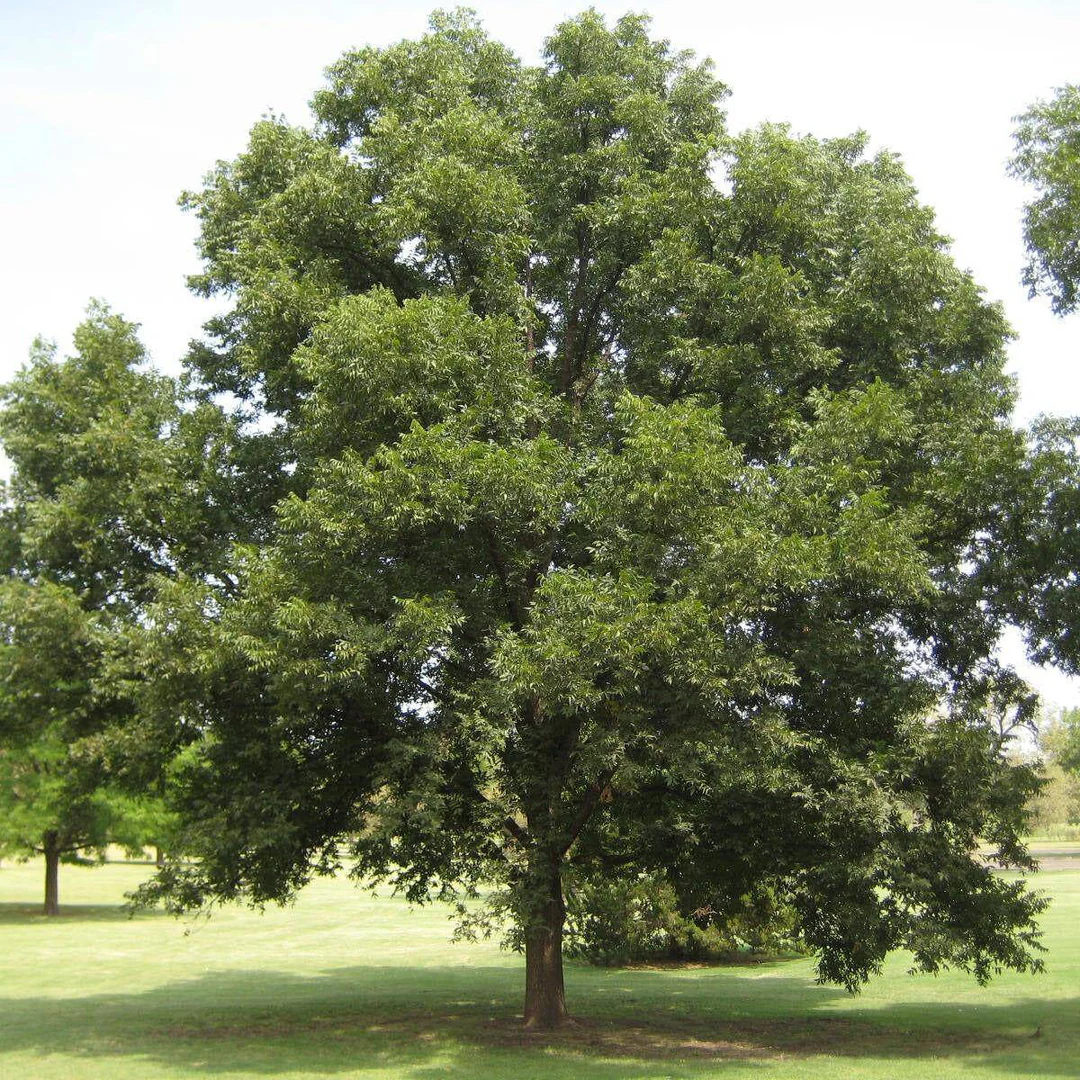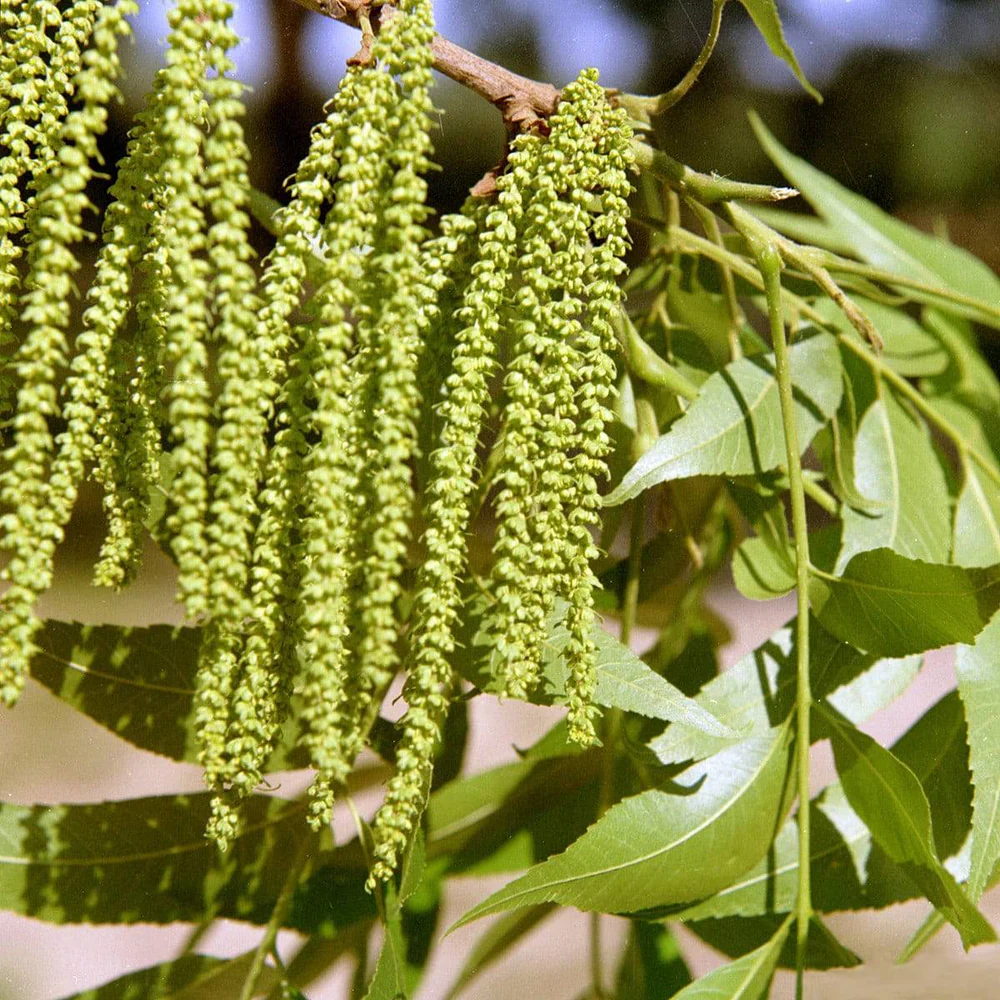Pecan
- Shipping Available
- Low stock - 1 item left
- Backordered, shipping soon
The wonderfully resilient pecan, or Carya illinoinensis, is a magnificent deciduous tree belonging to the hickory family. With its lovely, rounded crown, it typically reaches heights of 75 to 100 feet, and when fully mature, you'll find its trunks measuring between 2 to 4 feet in diameter. This charming species is native to states like Iowa, Illinois, Indiana, Ohio, and Alabama, and you can mostly spot it along the majestic Mississippi River and its significant tributaries. Each pecan leaf features 9 to 17 pointed leaflets, presenting a delightful medium green color, arranged in an odd-pinnate compound. The leaflets can grow from 2 to 7 inches in length, creating a lush canopy that matures to a beautiful yellow-green in summer, transitioning to a warm yellow-brown come fall.
The pecan’s flowers may be subtle, but they bring their own charm, blooming in greenish-yellow hues from April to May. Male flowers hang gracefully from drooping catkins, while female flowers emerge in short spikes, eventually producing the sweet, edible nuts we all love. When the nuts are ready in the fall, they split elegantly into four sections. American pecans are truly one of the key players in the commercial nut market, with most plantings thriving in the sunny South, from North Carolina to Florida, and all the way to Arizona and California. You’ll find a delightful variety of cultivars available.
For optimal growth, these trees prefer rich, moist, well-drained soils and plenty of sunshine. Thanks to their deep taproot, transplanting can be a bit tricky. For the best chance at cross-pollination, it's great to plant two different varieties together. In the northern parts of their range, nut production can be sparse, especially if spring arrives late and summer stays cool. While you can grow pecans from seed, keep in mind that a young tree might take around 8 to 10 years before it starts bearing nuts.
Height: 75’-100’
Spread 40’-70’
Bloom: April-May
Light: Full Sun
Water: Medium
Zone: 5, 6, 7, 8, 9
Origin: Iowa and Indiana south to Texas and Mexico
Spring Shipping:
Orders are shipped within 7-10 business days. We will email you if there are expected delays.
When you order plants from our nursery, you can expect them to arrive in the best possible condition. Our team carefully packs each order using sturdy, biodegradable packaging materials.
Your plants' appearance may vary depending on the season and their current growth stage. We may cut back the leafy growth of some plants to prepare them for shipment and transplanting.
5 Gallon and Up: Any plant purchased to ship over 5 Gallons will be shipped bare root. This means we will remove the plant from its original pot, remove the soil surrounding the roots, and wrap the roots with a biodegradable plastic bag. This reduces weight and the likelihood of damage during shipping.
Once your plants arrive, it is essential to plant them as soon as possible. This will help them rebound and thrive. If you cannot plant immediately, water regularly and keep the roots off heat-conducting surfaces.
Newly transplanted plants often require more water until their roots are well established. Plan to water them 1-3 times weekly for the first few months.














